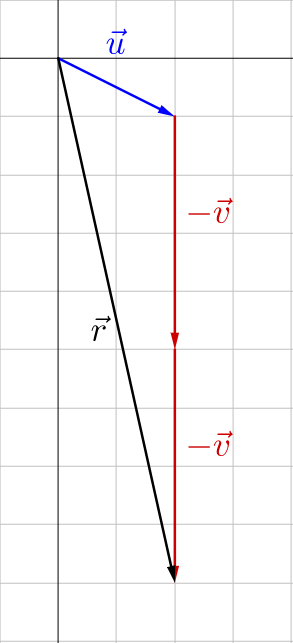Precalculus by Richard Wright
Precalculus by Richard Wright
Suppose a brother or a sister is without clothes and daily food. If one of you says to them, “Go in peace; keep warm and well fed,” but does nothing about their physical needs, what good is it? James 2:15-16 NIV
Summary: In this section, you will:
SDA NAD Content Standards (2018): PC.5.3, PC.6.4
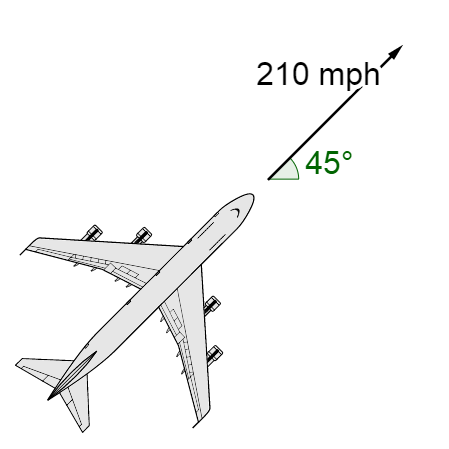
Lesson 6-03 showed that vectors can be useful to describe quantities that have direction. That direction was described in components: the horizontal measure and vertical measure. A formula had to be used to the get the total magnitude. Sometimes it is more convenient to describe the vector by the magnitude and direction angle. The direction angle is the angle the vector is pointing.
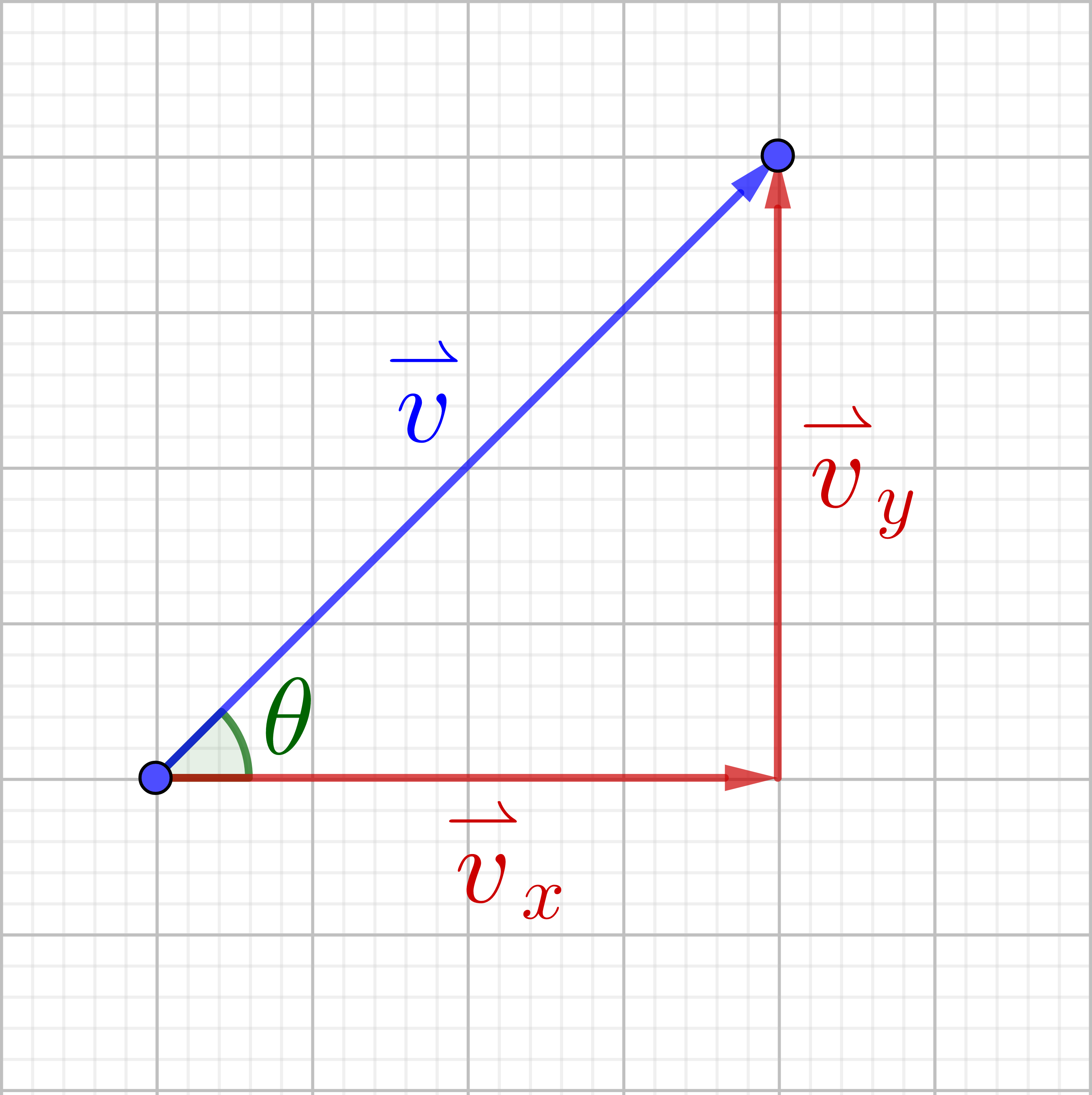
The vector and its components form a right triangle. Using trigonometry the following relationships are revealed.
$$v_x = \lVert \overset{\rightharpoonup}{v} \rVert \cos θ$$
$$v_y = \lVert \overset{\rightharpoonup}{v} \rVert \sin θ$$
$$\lVert \overset{\rightharpoonup}{v} \rVert = \sqrt{v_x^2 + v_y^2}$$
$$\tan θ = \frac{v_y}{v_x}$$
Vector \(\overset{\rightharpoonup}{v}\) can be written in trigonometric form as
$$\overset{\rightharpoonup}{v} = \lVert \overset{\rightharpoonup}{v} \rVert \langle \cos θ, \sin θ \rangle$$
$$\overset{\rightharpoonup}{v} = \lVert \overset{\rightharpoonup}{v} \rVert \langle \cos θ, \sin θ \rangle$$
Where
$$v_x = \lVert \overset{\rightharpoonup}{v} \rVert \cos θ$$
$$v_y = \lVert \overset{\rightharpoonup}{v} \rVert \sin θ$$
And
$$\lVert \overset{\rightharpoonup}{v} \rVert = \sqrt{v_x^2 + v_y^2}$$
$$\tan θ = \frac{v_y}{v_x}$$
Solution
Find the magnitude.
$$\lVert \overset{\rightharpoonup}{m} \rVert = \sqrt{m_x^2 + m_y^2}$$
$$= \sqrt{\left(-12\right)^2 + 5^2}$$
$$= 13$$
Find the angle.
$$\tan θ = \frac{5}{-12}$$
$$θ ≈ -22.6°$$
But this is in the wrong quadrant, so \(θ = -22.6° + 180° = 157.4°\).
$$\overset{\rightharpoonup}{m} = 13 \langle \cos 157.4°, \sin 157.4° \rangle$$
Evaluate the trigonometric functions.
$$\overset{\rightharpoonup}{n} = 6 \langle -\frac{\sqrt{2}}{2}, -\frac{\sqrt{2}}{2} \rangle$$
Now distribute the magnitude.
$$\overset{\rightharpoonup}{n} = \langle -3\sqrt{2}, -3\sqrt{2} \rangle$$
A hang-glider is diving at 20 mph at 30° below the horizontal. (a) Write the vector in trigonometric form and (b) write the vector in component form.
Solution
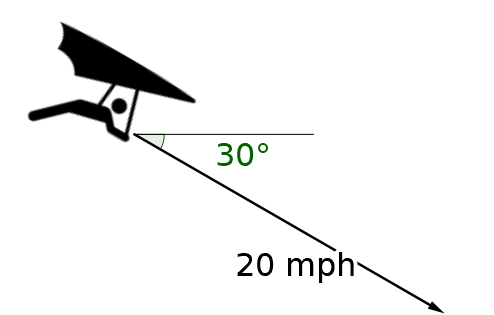
The angle is below the horizontal so the angle is standard position would be 360° – 30° = 330°.
$$\overset{\rightharpoonup}{v} = \lVert \overset{\rightharpoonup}{v} \rVert \langle \cos θ, \sin θ \rangle$$
$$= 20 \langle \cos 330°, \sin 330°\rangle$$
Multiply and evaluate the trigonometric form to get component form.
$$\overset{\rightharpoonup}{v} = 20 \langle \frac{\sqrt{3}}{2}, -\frac{1}{2} \rangle$$
$$= \langle 10\sqrt{3}, -10 \rangle$$
(a) Write \(\overset{\rightharpoonup}{x}\) = 23 m at N 15° W in trigonometric form, and (b) write \(8\langle \cos 45°, \sin 45° \rangle\) in component form.
Answers
\(23\langle \cos 105°, \sin 105° \rangle\); \(\langle 4\sqrt{2}, 4\sqrt{2} \rangle\)
To add vectors in trigonometric form, it is easiest to first find the component form and then add the vectors as in lesson 6-03.
An airplane is traveling at 250 mph at S 45° E and the wind is blowing at 30 mph at W 30° N. What is the airplane’s actually speed and direction?
Solution
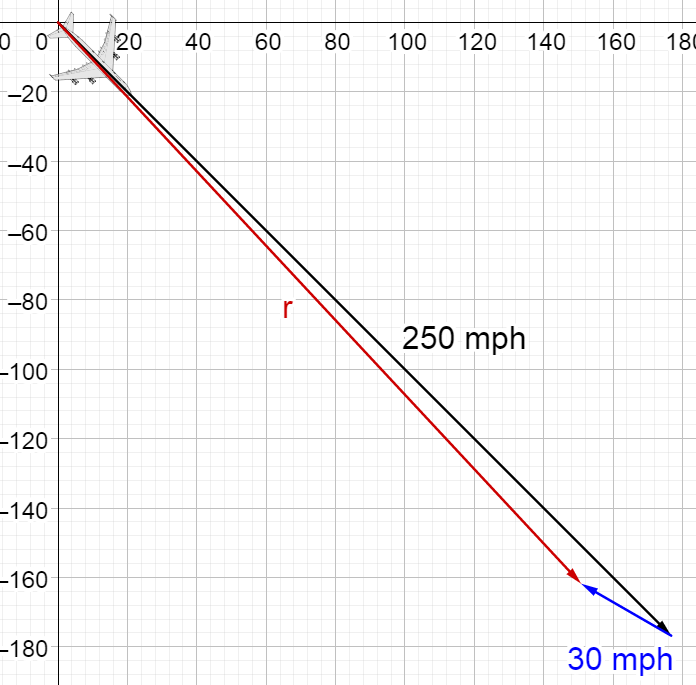
The actually speed and direction of airplane will the the plane’s velocity plus the wind’s velocity. Start by writing both velocities as vectors in trigonometric form.
The angle of \(\overset{\rightharpoonup}{p}\) in standard position is 315°. The angle \(\overset{\rightharpoonup}{w}\) in standard position is 150°.
$$\overset{\rightharpoonup}{p} = \lVert \overset{\rightharpoonup}{p} \rVert \langle \cos θ, \sin θ \rangle$$
$$\overset{\rightharpoonup}{p} = 250 \langle \cos 315°, \sin 315° \rangle$$
$$\overset{\rightharpoonup}{w} = 30 \langle \cos 150°, \sin 150° \rangle$$
Now, put the vectors in component form by evaluating and multiplying.
$$\overset{\rightharpoonup}{p} = 250 \langle \frac{\sqrt{2}}{2}, -\frac{\sqrt{2}}{2} \rangle$$
$$= \langle 125\sqrt{2}, -125\sqrt{2} \rangle$$
$$\overset{\rightharpoonup}{w} = 30 \langle -\frac{\sqrt{3}}{2}, \frac{1}{2} \rangle$$
$$= \langle -15\sqrt{3}, 15 \rangle$$
Add the vectors together.
$$\overset{\rightharpoonup}{r} = \overset{\rightharpoonup}{p} + \overset{\rightharpoonup}{w}$$
$$= \langle 125\sqrt{2}, -125\sqrt{2} \rangle + \langle -15\sqrt{3}, 15 \rangle$$
$$= \langle 125\sqrt{2} - 15\sqrt{3}, -125\sqrt{2} + 15 \rangle$$
$$= \langle 150.8, -161.8 \rangle$$
Now, convert the resultant to trigonometric form.
$$\lVert \overset{\rightharpoonup}{r} \lVert = \sqrt{r_x^2 + r_y^2}$$
$$= \sqrt{150.8^2 + \left(-161.8\right)^2}$$
$$≈ 221.2$$
$$\tan θ = \frac{r_y}{r_x}$$
$$\tan θ = \frac{-161.8}{150.8}$$
$$θ ≈ -47.0° + 360° = 313.0°$$
The 360° is added to put the angle in standard form.
$$\overset{\rightharpoonup}{r} = 221.2 \langle \cos 313.0°, \sin 313.0° \rangle$$
The airplane’s actual speed and direction is 221.2 mph at E 47.0° S.
Add \(\overset{\rightharpoonup}{a}\) = 23 m at S 25° E and \(\overset{\rightharpoonup}{b}\) = 12 m at E 17° N.
Answer
27.38 m at E 39.28° S
$$\overset{\rightharpoonup}{v} = \lVert \overset{\rightharpoonup}{v} \rVert \langle \cos θ, \sin θ \rangle$$
Where
$$v_x = \lVert \overset{\rightharpoonup}{v} \rVert \cos θ$$
$$v_y = \lVert \overset{\rightharpoonup}{v} \rVert \sin θ$$
And
$$\lVert \overset{\rightharpoonup}{v} \rVert = \sqrt{v_x^2 + v_y^2}$$
$$\tan θ = \frac{v_y}{v_x}$$
Helpful videos about this lesson.
